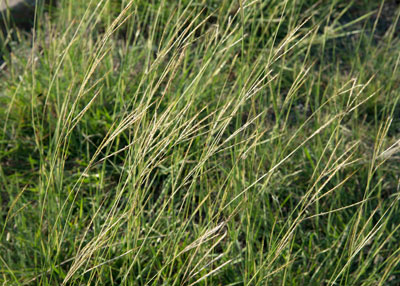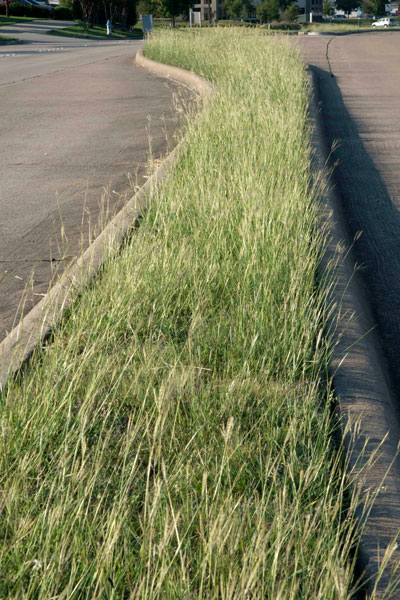Question of the Week: October 13, 2016
“Neil, what is this weed, and how can I get rid of it?”
I get this question many times every fall. It’s become much more common in recent years.

Photo: It’s time for KR bluestem to produce its seedheads across Texas. Watch for them now!
This is KR bluestem, more formally known as “King Ranch bluestem.” It was introduced into the U.S. from southern Europe and South Africa almost 100 years ago as a source of livestock forage and as a means of stabilizing raw cuts along roadsides.
It certainly did all of that, but in the process it became obvious that KR bluestem was also invasive and that it threatened the diversity of native species of plants. It’s not exactly as bad as kudzu perhaps, but it’s along those same lines.

Photo: This is how thick KR bluestem can become. This is a city median in the Metroplex, but unless you’re careful, it could also be your own home lawn.
At this is the point in this answer that I’m glad I’m a horticulturist. Agronomists who get to deal with unwanted KR bluestem in pastures and prairies have a much bigger task than home gardeners will have. For that kind of large-scale control I will refer you to your local offices of the Texas AgriLife Extension. I’ll confine my suggestions to home lawns alone.
Coping with KR bluestem in lawns
It’s been my observation that KR bluestem rarely shows up in really healthy, vigorous home lawns. It’s much more common in lawns that have struggled through drought, lack of fertilizers and infrequent mowings.
So that leads me to these three suggestions for starters:
• Mow regularly at the height recommended for the type of grass you have in your lawn. This is especially important in fall, when KR bluestem is setting seeds. Keep the seed heads mowed off on 5- to 7-day intervals. Bag the clippings and compost them completely before using them in your landscape.
• Keep your desirable grass properly watered. Of course you’ll have to abide by any water curtailments in your city, but at least give your turf a fighting chance to crowd out the invader.
• Fertilize your lawn at least two times per year (mid-April and early September). Apply an all-nitrogen or high-nitrogen food that has half or more of that nitrogen in slow-release form.
If you do all of that and you still have KR bluestem showing up in your lawn, either spot-treat stronger clumps with a glyphosate-only herbicide spray or, as most people do, just dig the clumps out manually, preferably as soon as you see them starting to grow.
KR bluestem is a perennial grass, so pre-emergent weedkillers we talk about here in late winter and late summer normally wouldn’t be of much help. But because it spreads so freely from seed, if you have neighboring lawns where the homeowner does nothing to stop it, the pre-emergent granules might offer some additional help. Apply Dimension, Team or Halts in early March and again in early June, then for fall germination, in early September.
